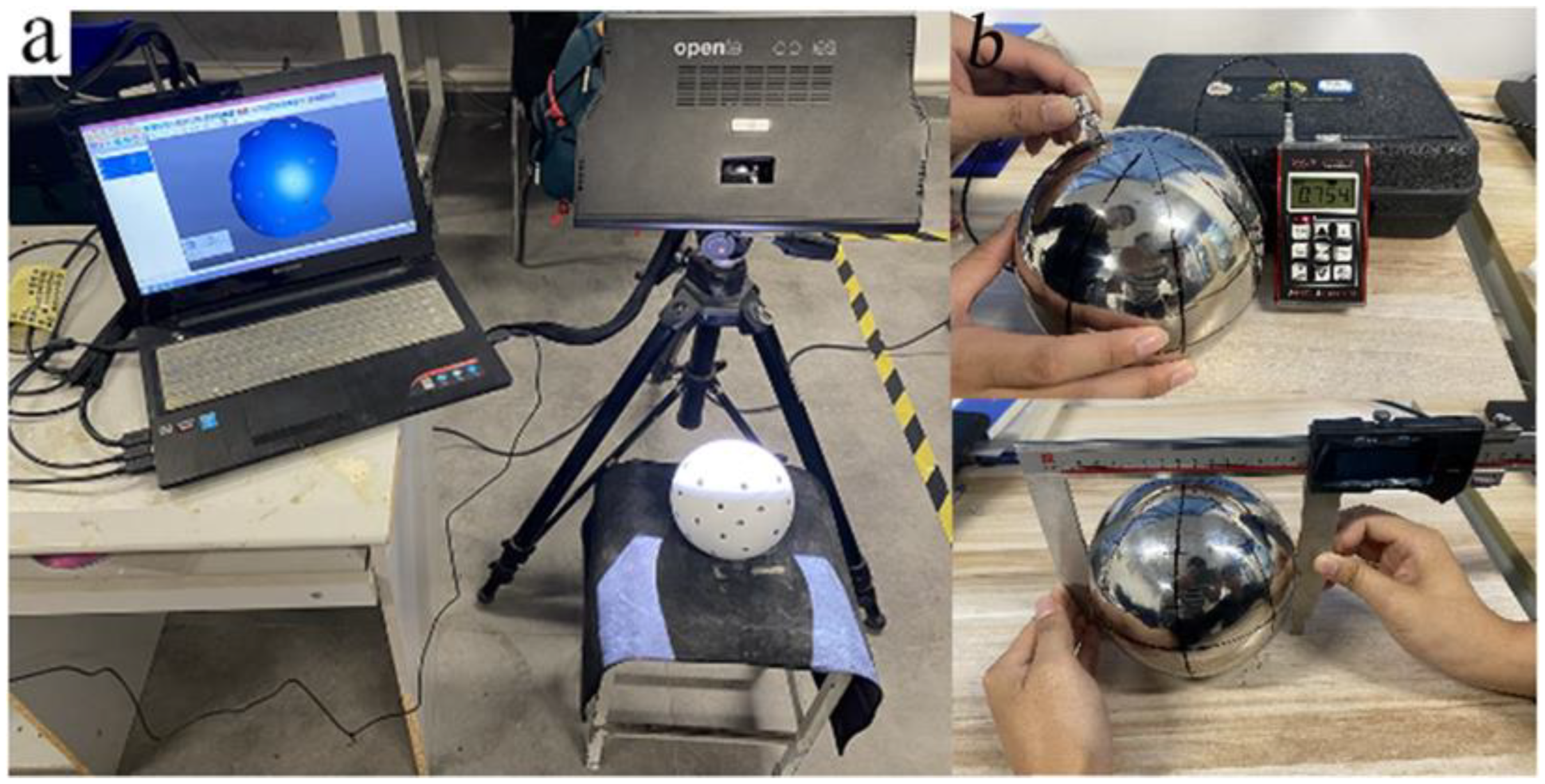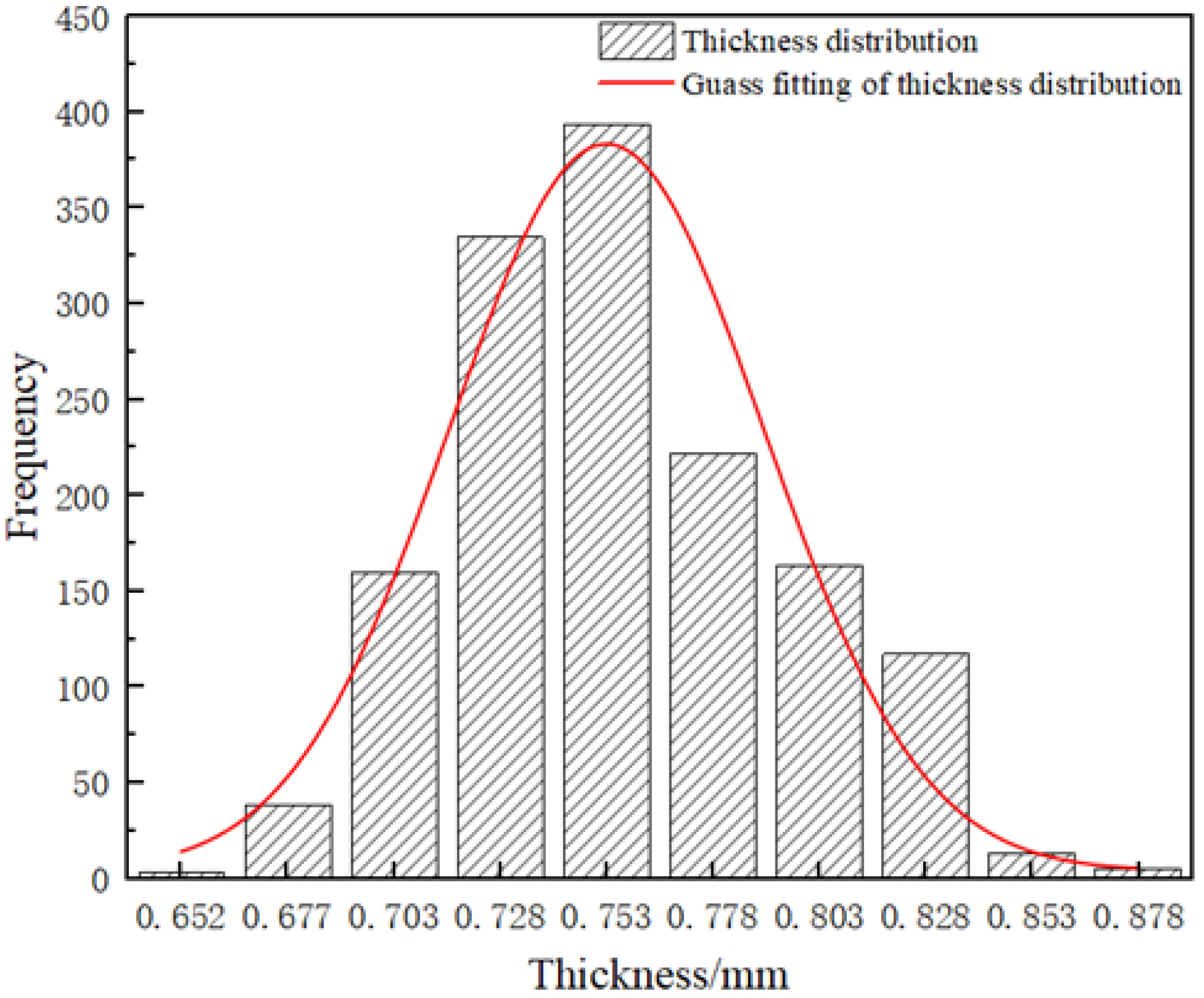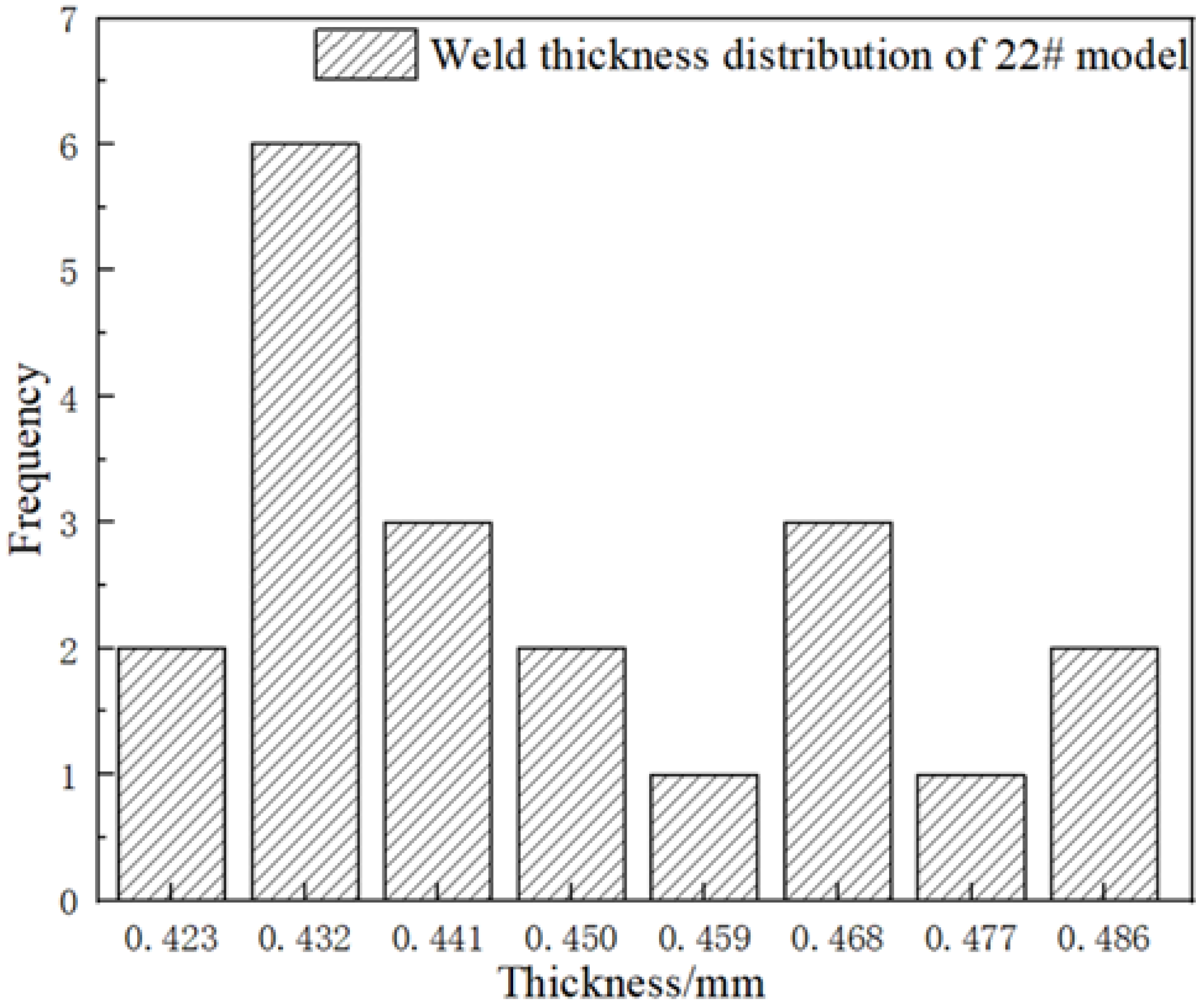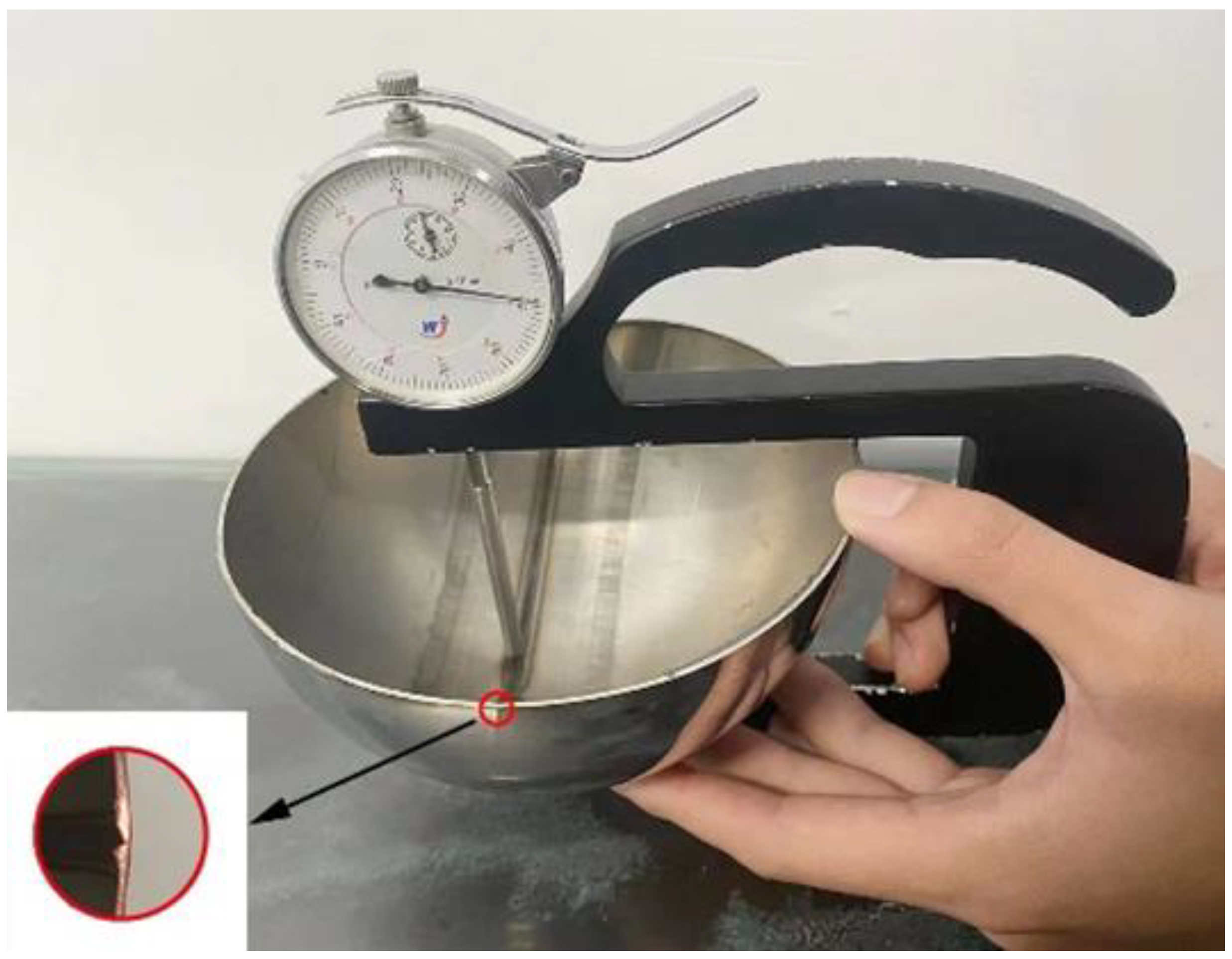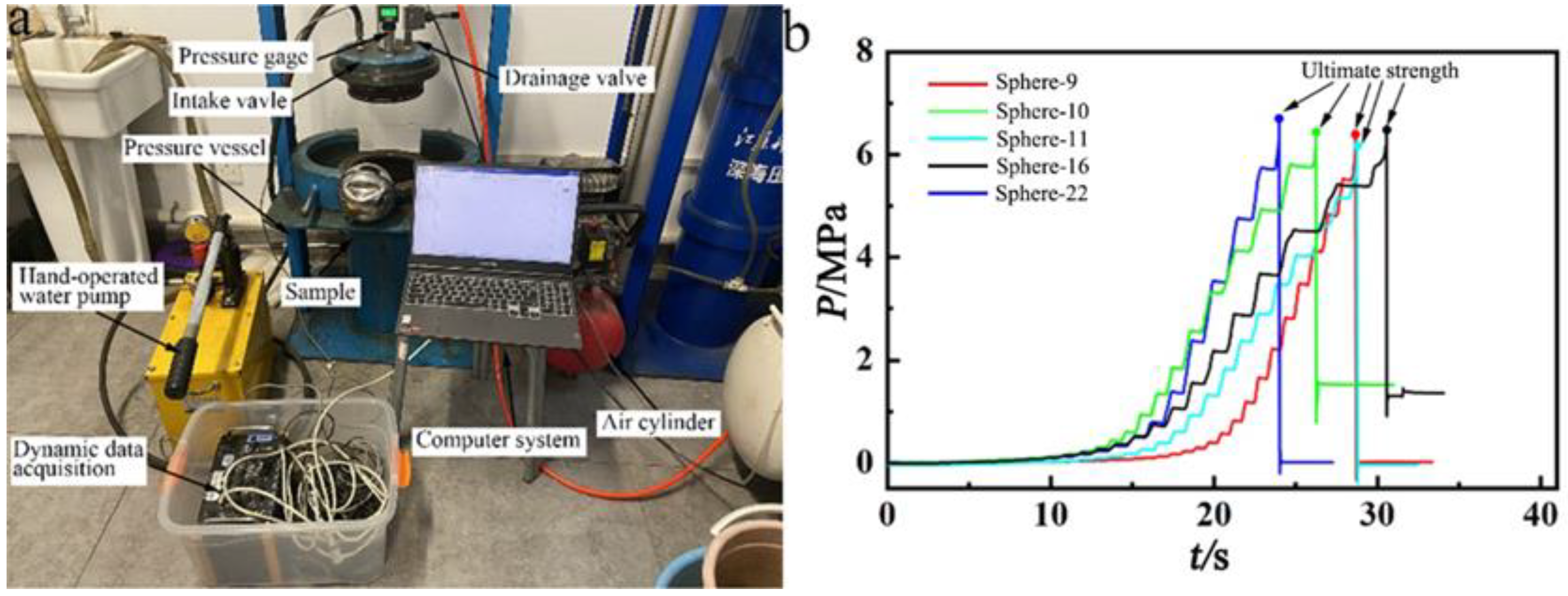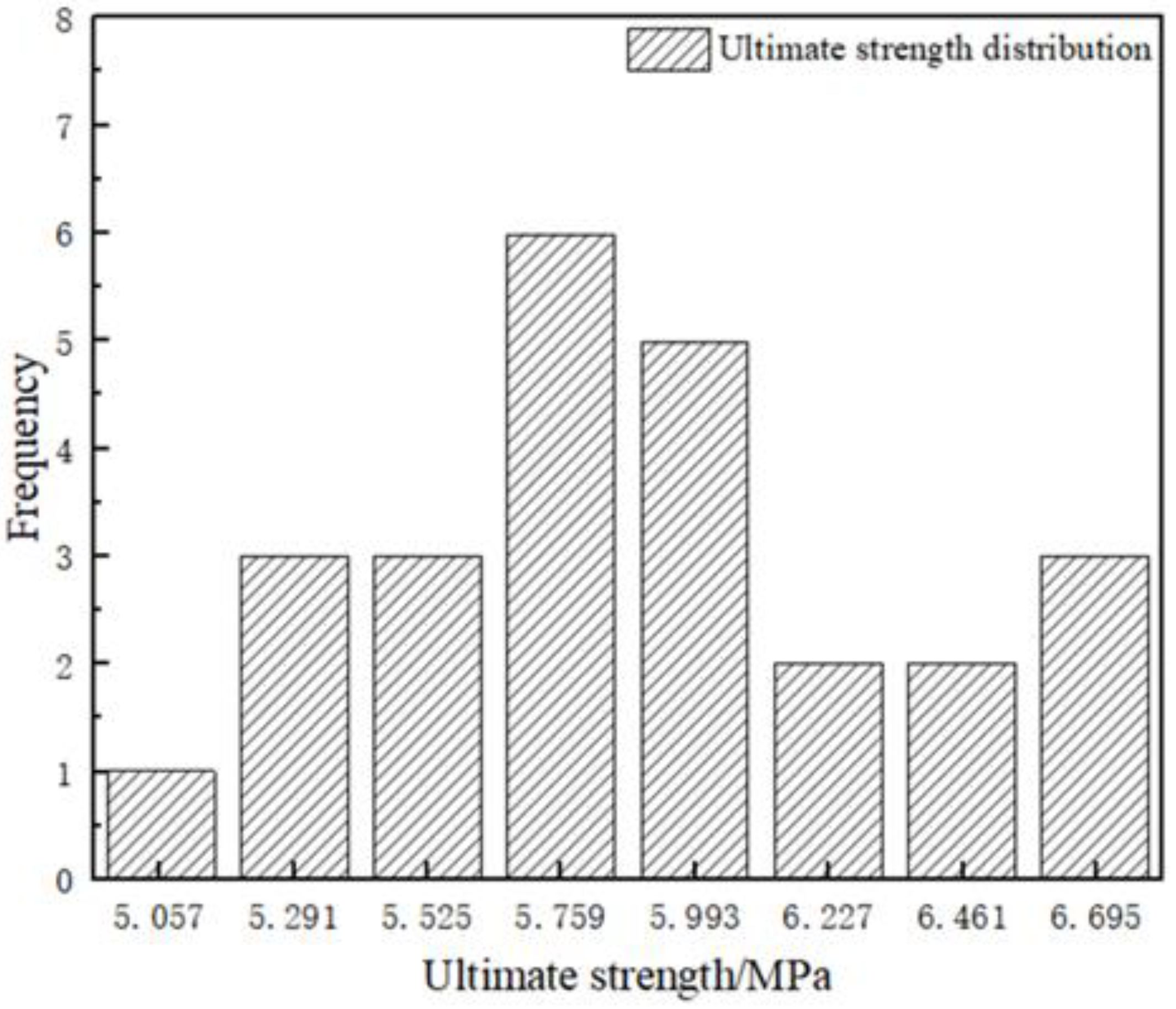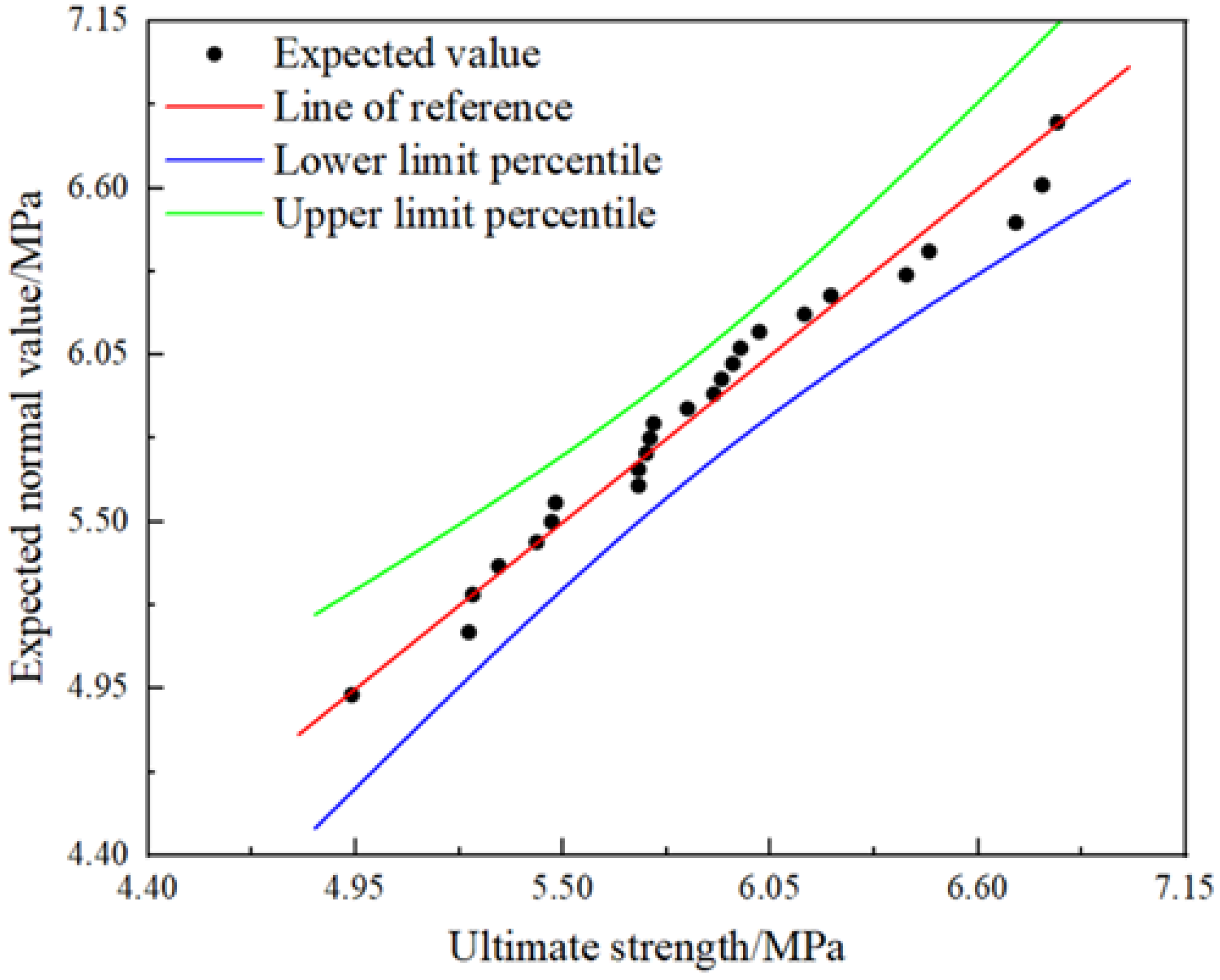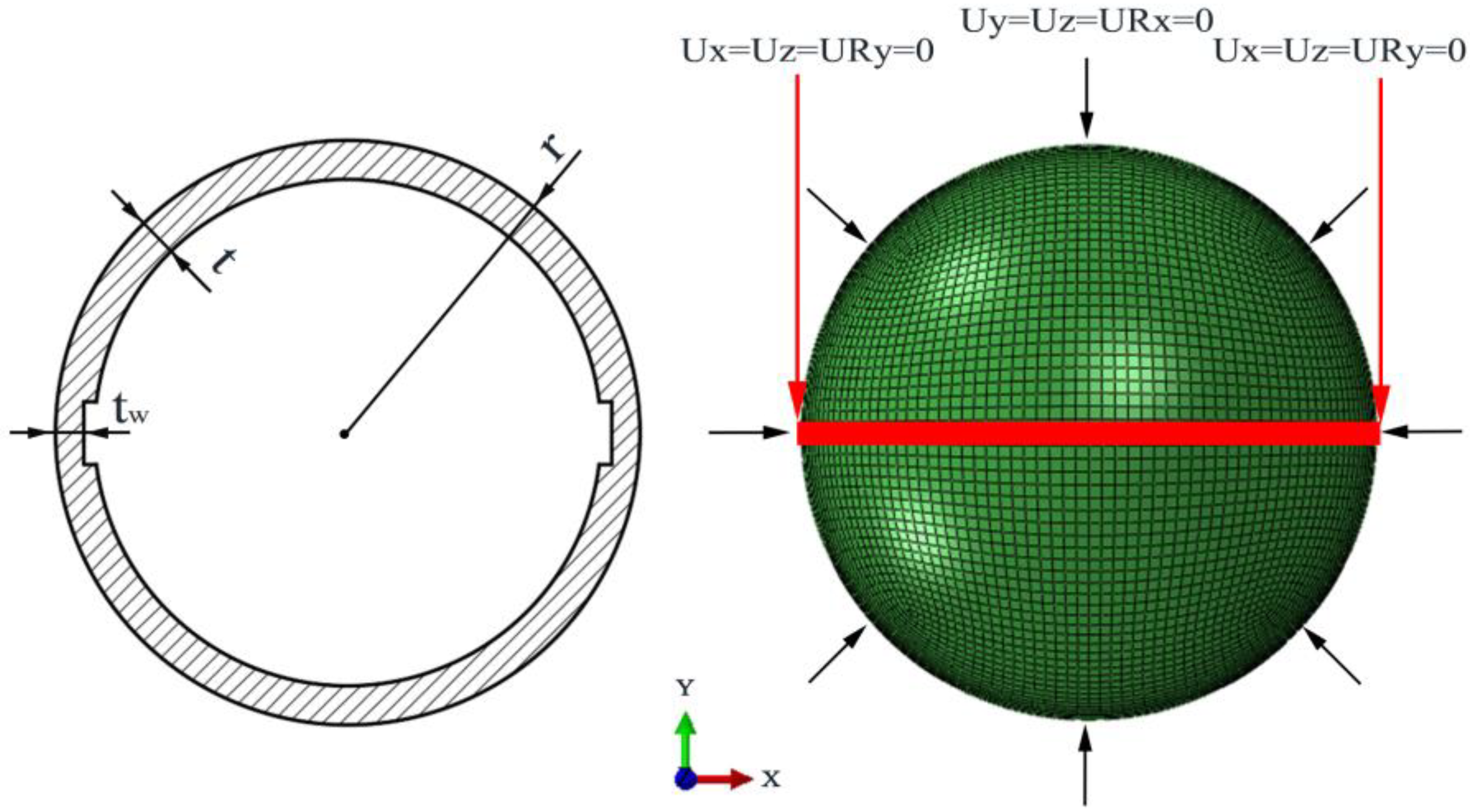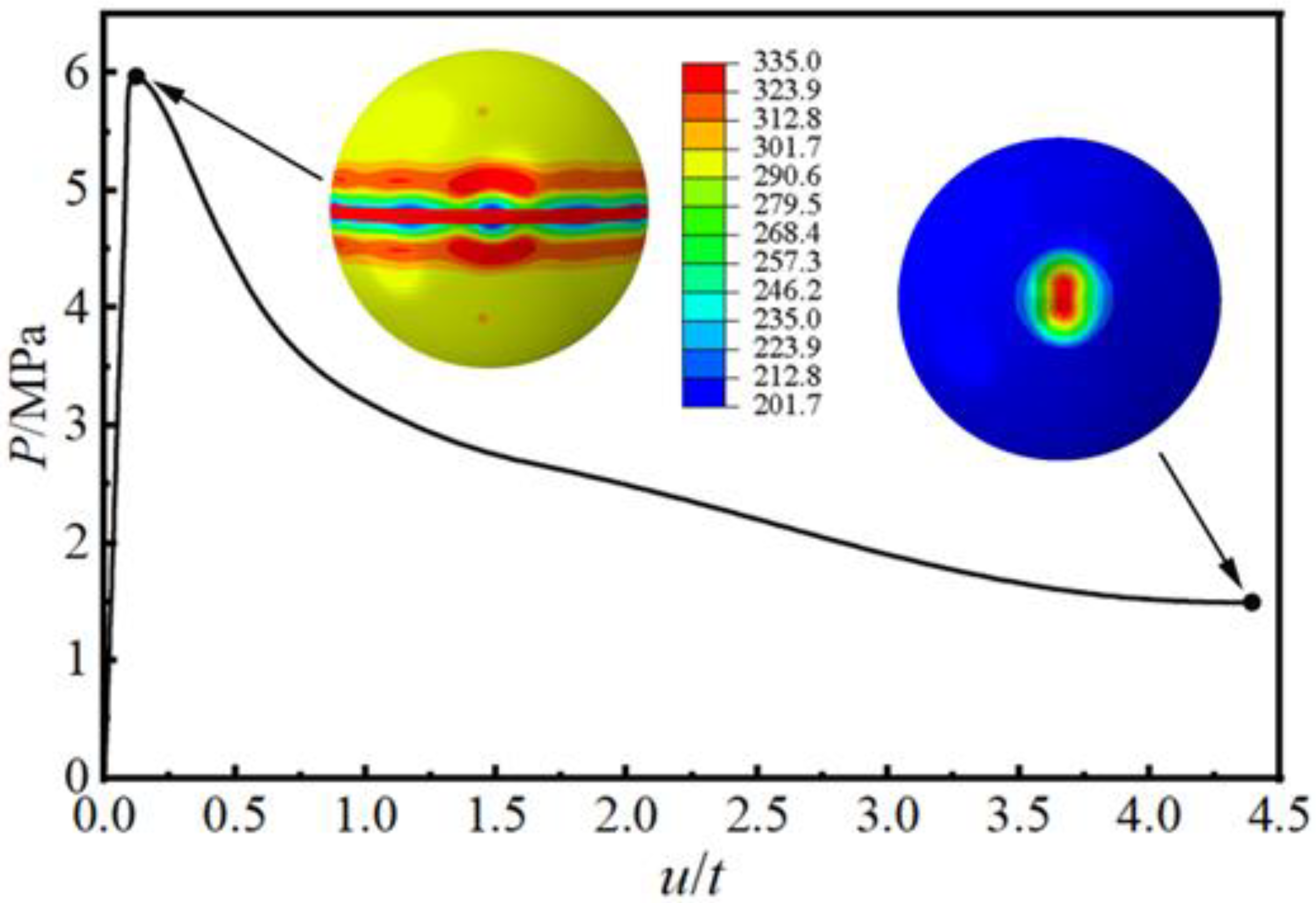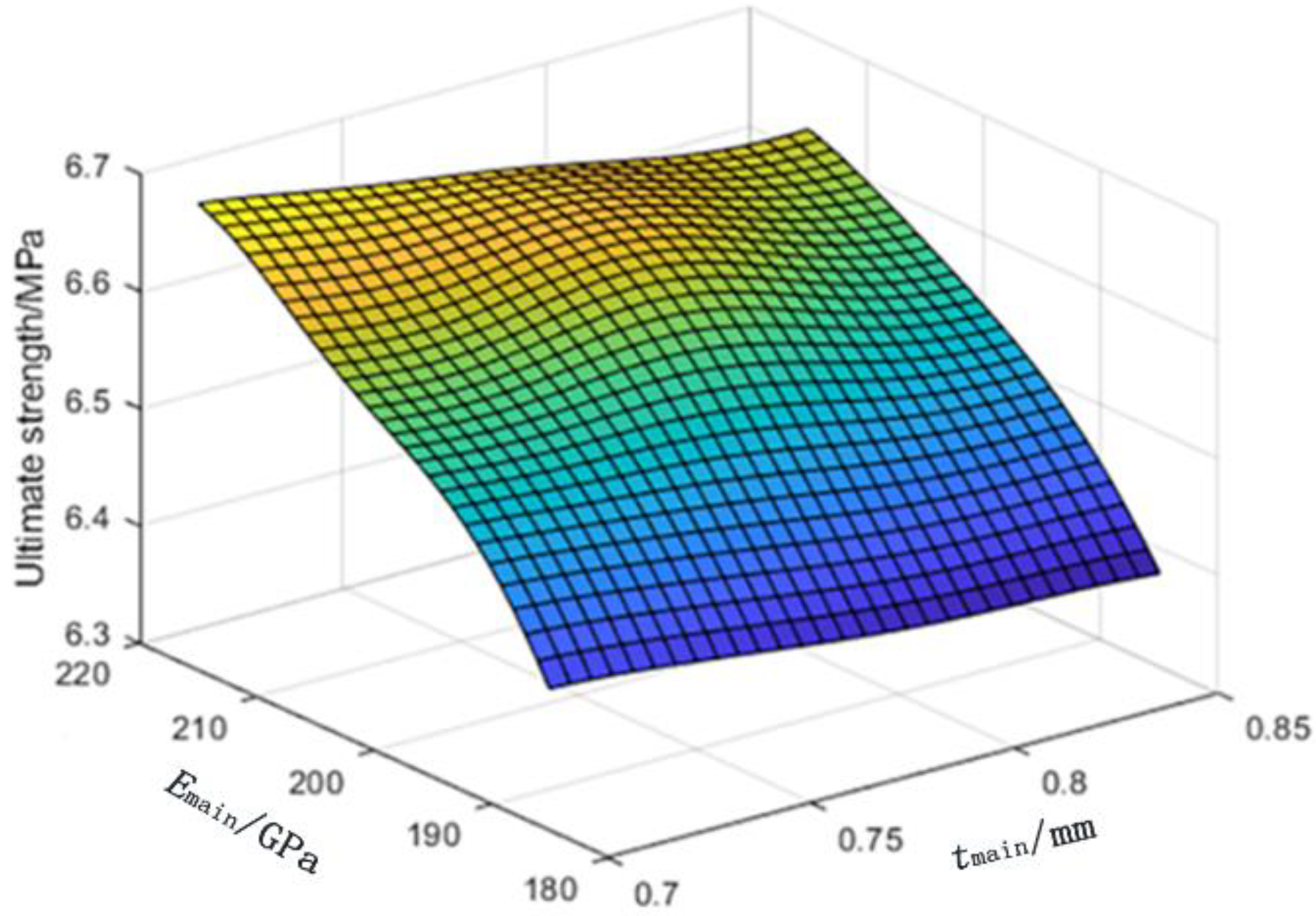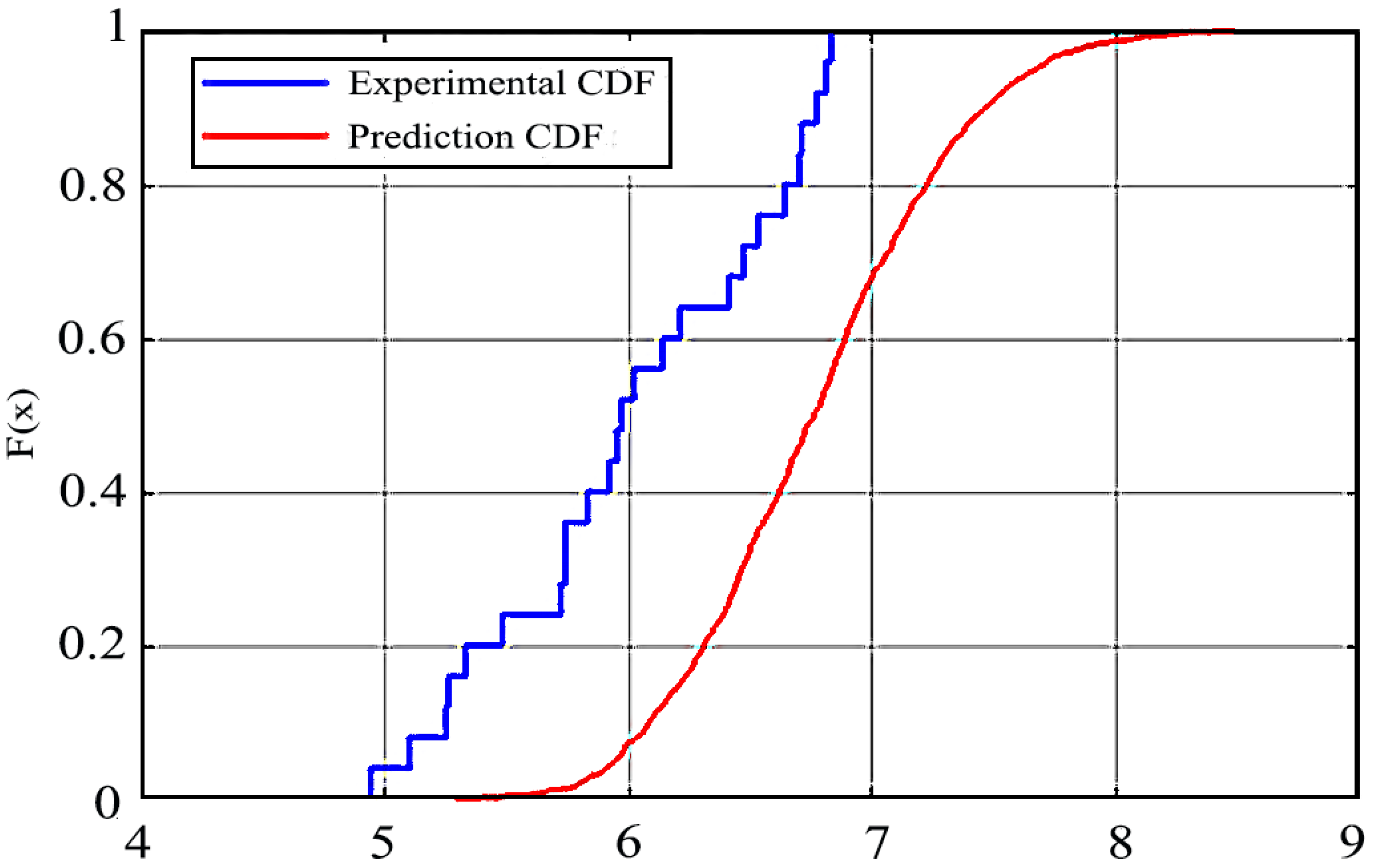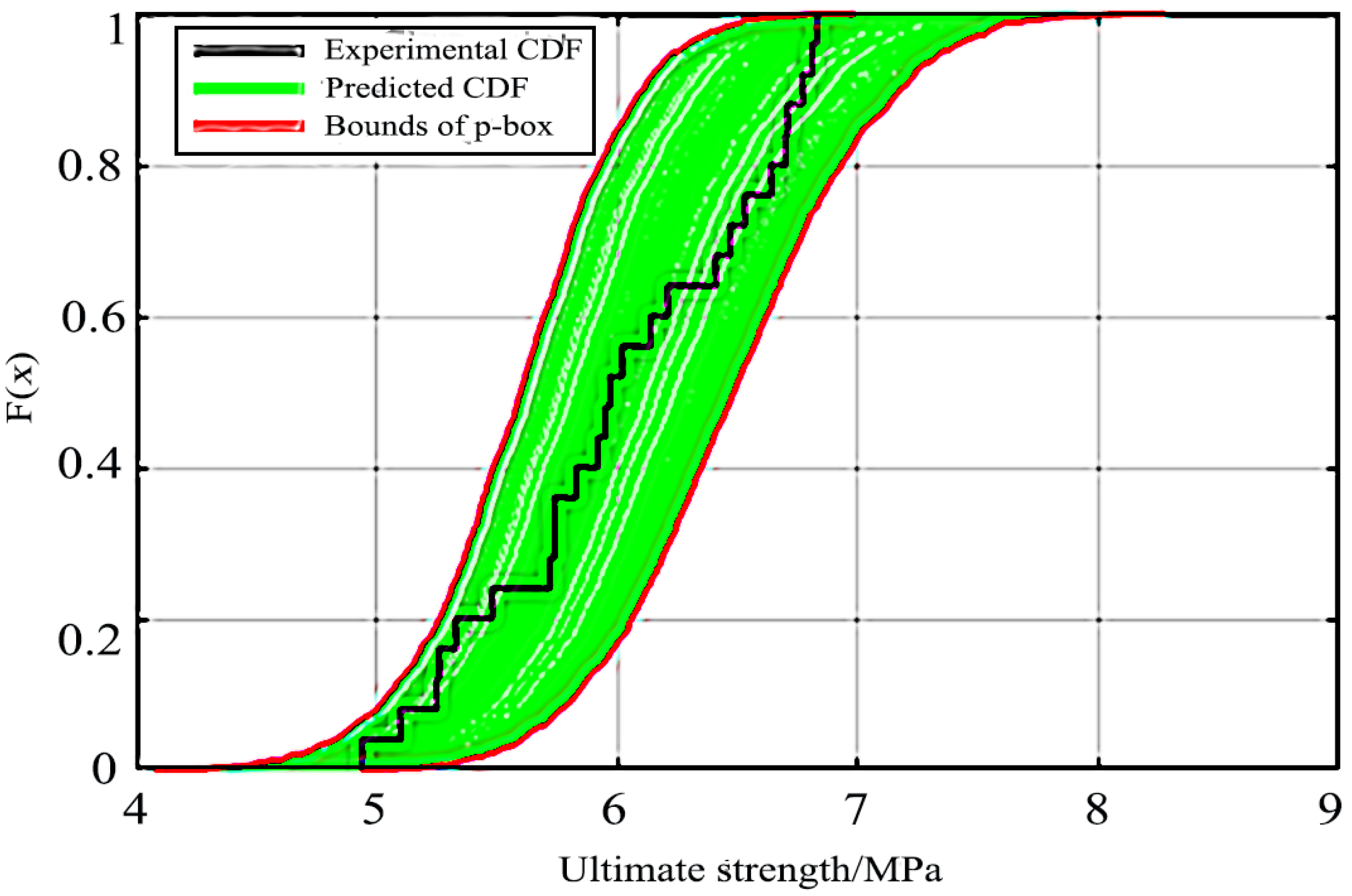1. Introduction
With the acceleration of human exploration of marine resources, the studies on high-stability pressure shell structures have become more and more urgent. As a typical type of pressure shell, spherical shells are widely used because of their great performance in regards to spacing, manufacturing, and service [
1,
2,
3]. The ultimate strength of spherical shells subjected to external pressure is a main area of concerned for designers and engineers in the design and service phase.
Many numerical and experimental methodologies have been studied to investigate the ultimate strength of spherical shells. Zolly [
4] derived the formula for the critical pressure of spherical shells subjected to external pressure based on the small deformation assumption. Wagner et al. [
5] proposed a reliable design method for spherical shells based on a robust knockdown factor. Krenzke and Kiernan [
6] conducted experimental tests on a large number of spherical shells, and concluded a method to calculate the ultimate strength. However, spherical shell is a positive Gaussian rotation structure, and its ultimate strength is sensitive to structural dimensions, defects, and material properties [
7]. Yu et al. [
8] and Zhang et al. [
9] introduced imperfections to the model and analyzed the ultimate strength of spherical shells. Wagner et al. [
10] presented and compared modeling details of commonly used new approaches for shell design, and evaluated the lower-bound buckling pressure. Pan et al. [
11,
12] summarized and verified the empirical formula for ultimate strength calculation of spherical shells made of titanium alloy, and indicated that the influence of welding on ultimate strength cannot be ignored. Zhang et al. [
13] investigated the ultimate strength of externally pressurized steel spheres considering through-thickness defects. Zhu et al. [
14] proposed a prediction formula for local buckling calculation of spherical shells, considering local corrosion. Zhao and Bai [
15] conducted a comparative study on various analytical approaches and codified rules, and established the model evaluation criteria by implementing statistical model uncertainty factors. In addition, spherical shells are assembled with cylinders or cones, and the mechanical characteristics become more complex [
16,
17].
Uncertainty is inevitable in all aspects of manufacturing, including modeling and testing. Cerik et al. [
18] defined the modeling uncertainties by probabilistic characteristics based on experimental data, and evaluated the influences of random geometrical and material properties on the failure assessment. MacKay et al. [
19] investigated the accuracy of model prediction for collapse pressure of a pressure hull by taking uncertainty factors into account, and the uncertainty level in the numerical evaluation of limit states of submarine pressure hulls has been quantified. Qiu et al. [
20] performed uncertainty analysis for an axial flow waterjet pump based on the computational fluid dynamics method. Reed and Earls [
21] presented a detailed study on identifying and characterizing imperfections of a representative ship hull, along with concomitant uncertainties. However, when different kinds of uncertainties are considered in the modeling and experimental phases, the uncertainty propagation and quantification process become more complex [
22].
Currently, the verification and validation (V&V) theory is used in evaluating the credibility of model predictions in many areas [
23,
24,
25], especially for cases considering combined uncertainties. Long et al. [
26] introduced the delayed detached eddy verification and validation method, and evaluated the reproduction and prediction performance of simulation under the uncertainty condition. Matsuda and Katsui [
27] employed the V&V method to study uncertainties in the turbulence model for viscous resistance estimation. However, few of them concentrate on the hybrid uncertainty condition, which is more common in the real world. The probability box (p-box) is an efficient method to deal with hybrid uncertainties, and it has great potential for engineering applications. Faes et al. [
28] presented the state-of-art review for the modeling and propagation of uncertainties using p-box, especially for the conditions of structural reliability analysis. Vinuesa and Cuervo [
29] demonstrated uncertainty analysis based on the p-box method by using nested random sampling. Wu et al. [
30] investigated the sensitivity analysis for numerical and engineering case studies based on the p-box method, and the influences of input parameters on the output responses were quantified. Zhang et al. [
31] proposed a novel reliability assessment method for turbine discs by combining fuzzy and p-box variables; the proposed method performed well in transforming non-normal variables and decreasing computational costs.
As shown above, the ultimate strength is an important characteristic for evaluating the performance of spherical shells. Until now, most studies on spherical shells were conducted on the deterministic premise. However, uncertainties are everywhere in the simulation and experimental tests. The studies ignoring uncertainties will lead to some misjudgment of the engineering decisions. While some potential methods are being applied in critical fields to improve design safety and service reliability, deep studies considering uncertain factors for spherical shells should be conducted to improve the credibility of prediction.
The present paper aims to investigate uncertainties of ultimate strength for spherical shells subjected to external pressure. Compared with the works published in the literature, aleatory and epistemic uncertainties are considered simultaneously in this study, which can be regarded as the highlight of the research. The works presented in this paper extend the analysis of ultimate strength of spherical shells to a stochastic premise which makes the comparison between simulation and experimental results more reasonable.
The rest of this paper is organized as follows:
Section 2 introduces some basic methodologies of the p-box and surrogate models for ultimate strength.
Section 3 presents the experimental studies, including the test details regarding the dimensions and ultimate strength, as well as the analysis of the test results.
Section 4 establishes the Gaussian process (GP) model of ultimate strength, and the p-box of ultimate strength is obtained based on the highly precise surrogate model. In the same section, uncertainty analysis of ultimate strength is conducted by comparing experimental and simulating results in the stochastic frame. The conclusions of this paper are summarized in
Section 5.
5. Conclusions
The uncertainty of ultimate strength for spherical shells subjected to external pressure is studied from both experimental and simulation aspects. To evaluate the influence of welding on simulation results, case studies using perfect spherical shells and shells considering welding are carried out, respectively. The conclusions can be summarized as follows:
(1) The uncertainty analysis can extend the study on the ultimate strength of spherical shells from the deterministic to the stochastic perspective. The analysis considering the variability of material properties and shell thickness can predict the ultimate strength over a wider range, and the comparison between CDFs and stochastic characteristics can avoid the occasionalities or erroneous judgment of both experimental and prediction values.
(2) The thickness of the spherical shell varies randomly over the structure. In the main body, the coefficient of variation for shell thickness is 4.206–6.214%, and the distribution of thickness at all test points presents like a normal distribution, in which the mean and standard deviation are 0.753 and 0.037. However, the shell thickness in the welding region cannot be fitted by a normal distribution, and the mean value of thickness in the welding region is about 0.545 to 0.736 times of that in the main body.
(3) The established GP model is accurate enough to replace the time-consuming finite element mode to calculate the ultimate strength of the spherical shells. The determination coefficient R2 of the GP model for the modeling and prediction sample groups is 1.0 and 0.998, respectively. In addition, the RMSE of the model for the two sample groups is 2.138 × 10−14 and 0.008, respectively.
(4) The influence of welding should be included in the ultimate strength analysis for spherical shells subjected to external pressure. The case study ignoring the welding seam results in greater ultimate strength over the whole uncertain parameter space, along with a wide gap between the experimental CDF and the predicted value. The error of the mean value, as well as the standard deviation of ultimate strength between the predicted and experimental results, are 12.44% and −9.48%, respectively. The errors are mainly caused by ignorance of the influence of uncertainties caused by welding.
(5) The predictions of ultimate strength for spherical shells, considering aleatory and epistemic uncertainties simultaneously, can better cover the experimental results. The experimental empirical CDF is contained in the predicted p-box over the whole range. For the experimental empirical CDF and the bounds of the p-box, the error of mean value is −6.612% to 8.805%, and that of standard deviation is −19.138% to 0.517%, respectively. The results indicate that while uncertainties of material properties and thickness are considered, the capability of the model in predicting the ultimate strength is improved.
The proposed method can be used for the reliability of the design and the evaluation of the spherical shells working in the real environment. However, the uncertainties are more complex for the real spherical shells. Further studies should verify the material properties given by the manufacturer and conduct hierarchical stochastic model updating, as well as model validation, based on multi-responses to improve the prediction capability of the established model.

